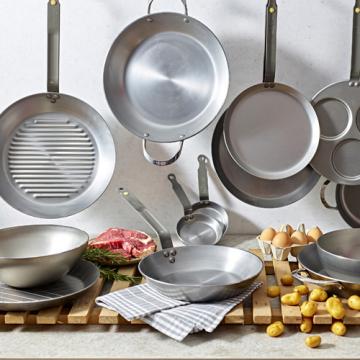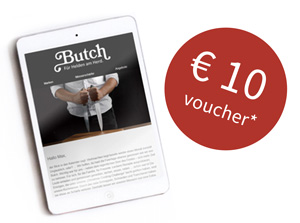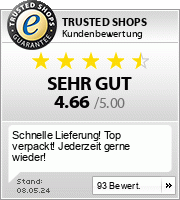
de Buyer Mineral B Iron Pans
Butch doesn't want to sweet-talk you. But - the de Buyer Mineral B iron pans from de Buyer are something truly bee-special! The magic words: conductivity, beeswax, fried potatoes & seasoning!
Forged Iron Pans
The forged frying pans are made of 99% pure iron, guaranteed without chemical coating. The factory-applied beeswax finish serves as a natural corrosion protection and, by the way, also makes seasoning easier. Once seasoned, a dark patina develops in the frying pans. This patina acts like a natural non-stick coating, which intensifies and improves with frequent use. True to our motto: "Iron pans and friendships – the older, the better!" And this very patina is also responsible for the frying flavor beloved by connoisseurs.
Perfect for Crispy Frying
There is a good reason why cast iron pans are so popular: they allow for truly crispy frying. Steaks, fried potatoes, pancakes, crêpes, and (with a little practice) even fried eggs turn out perfectly in the Mineral B pans. Iron has an ideal heat conduction, heats up quickly, and reaches high temperatures. Additionally, you can fry precisely in cast iron pans, as changes to the temperature settings are immediately transferred. The extra thick steel of 2.5 – 3 mm in the de Buyer 1830 Mineral B Element series is suitable for all types of stoves, including induction, and is ideal for frequent use.
Please note a few points:
- The bottom diameter of the pan must match the cooking zone / hob. If the cooking zones are too small, the pans can warp, especially the country pans.
- Since cast iron pans heat up extremely quickly, they should not be left empty (without oil or food) on the stove for long. There is a risk of overheating, which can lead to deformation of the bottom.
- The instructions for use on induction stoves are very important: Since the heating power of induction is extreme, we recommend choosing moderate temperature settings. Please never use the booster or turbo function and never place the cast iron pan empty on the stove. There is a risk of overheating, and the pans can warp. Although this is particularly true for induction stoves, it can also be applied to all other types of stoves.
- Acidic foods and dairy products are not suitable for cast iron pans. The acid (for example, from citrus fruits or wine) attacks the patina, can remove it, and the pan becomes prone to rust. Dairy products such as cream or cheese form an unappetizing film on the patina and are very difficult to remove.
- The pans should never be soaked for long periods. Dishwashers are absolutely taboo. Traditionally, the pans are only wiped out with kitchen paper while hot; you can also use a regular sponge with water. If you ever feel the need to clean with detergent, it is advisable to rinse the pans thoroughly with water, dry them well, and then rub them with cooking oil.









